New World Engineering Guide
Engineering is a New World Crafting Trade Skill. Engineering allows for the creation of ranged weapons such as bows and muskets, which are used in ranged combat. Ammunition for these ranged weapons can also be made using engineering. The player can invest in and master a variety of non-combat skills known as Trade Skills. Crafting Trade Skills are used to make a wide range of items, from weapons and consumables to ammunition and furniture.Engineering Information
Engineering is a crafting skill that focuses on making Ranged Weapons, Ammunition, and Gathering Tools with resources and materials obtained from Gathering and Refining skills. With a higher Engineering level, players will be able to craft better, more powerful weapons while also expanding the Gear Score range of craft able weapons. Engineers will also be able to craft more ammunition for the same number of resources in the case of ammunition.
Engineering is done at a Workshop for ranged weapons, ammunition, and gathering tools, and a Forge for melee weapons, both of which are located in Settlements. The Tier level of a station can be increased by completing Town Projects. It's worth noting that each craftable item has a tier level requirement. This tier corresponds to the tier level of the Crafting Station. If your settlement's Crafting Station level isn't high enough, you'll have to either raise it or find another settlement with a higher-tiered Crafting Station. In order to craft Engineering items, the player must have the appropriate Engineering level. In Engineering, progressing through the ranks is a simple process. To advance in the skill, players simply need to keep crafting weapons, tools, gold or ammunition. Collecting resources, on the other hand, is more involved and can be challenging.
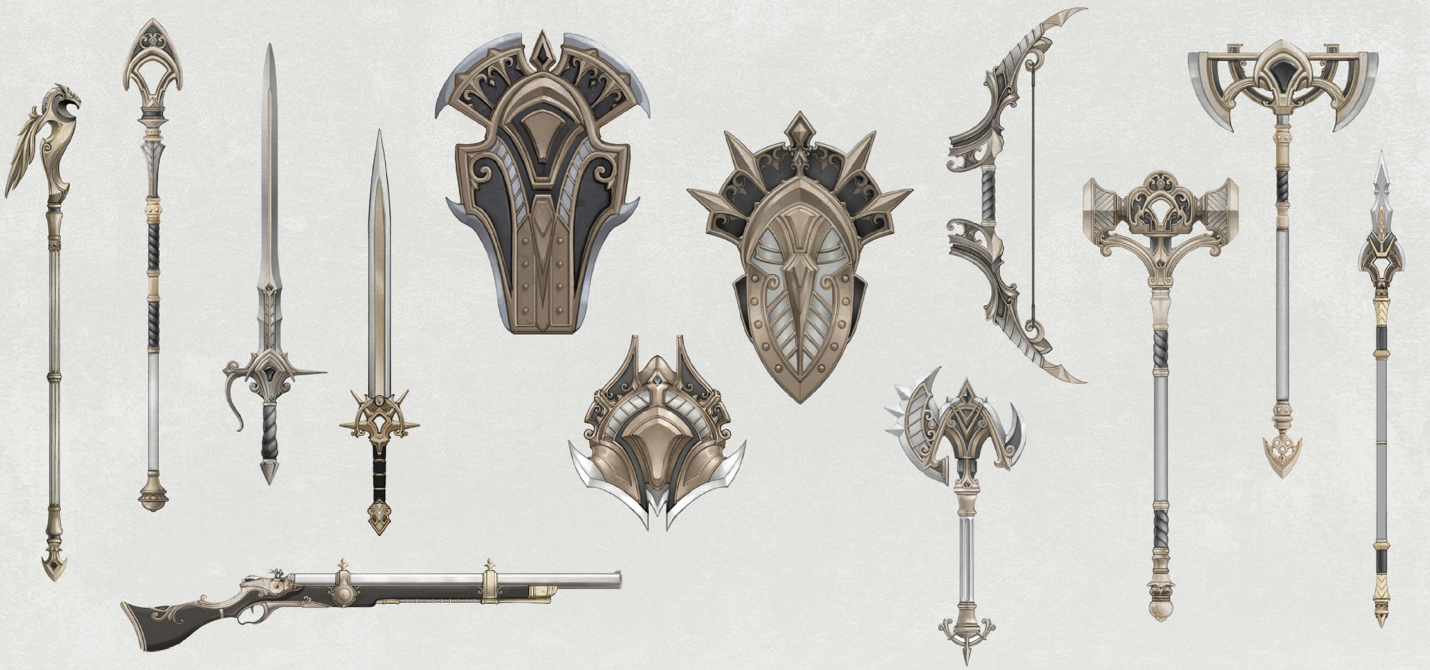
Engineering is a skill that heavily relies on the following skills for resources and materials, making them highly recommended companion skills:
●Smelting
●Woodworking
●Leatherworking
●Weaving
●Mining
●Logging
●Skinning
●Harvesting
Note that materials for any crafting skill can be obtained from other players via trading, so players can still succeed in Engineering even if they invest in other skills, but this necessitates using the game's economy system.
Engineering Weapons and Tools Perks
A weapon or tool has a small chance of gaining one or more Perks or an Empty Gem Socket while being crafted. While the outcomes are random, players can use the special resource Azoth to increase their chances of getting perks, a socket, or both during the crafting process. There are also a variety of special materials that can be found around the world that, when used during the crafting process, can determine which Perk is added to the weapon or tool. There are no guarantees that a Perk or Gem Socket will be added to the piece of equipment, but the likelihood increases as the Crafting skill level rises.
Interacting with a Workshop or Forge, which are crafting stations found in Settlements, is the first step in the Engineering crafting process. Ranged Weapons, Arrows, and Ammunition, as well as Gathering Tools, are all made in the Workshop. Melee Weapons are created in the Forge. You can see all of your learned recipes for all Crafting skills associated with the crafting station on the left panel of the crafting UI. When you select a recipe, the item and its required materials appear in the middle panel, while a preview of the potential result appears on the right.
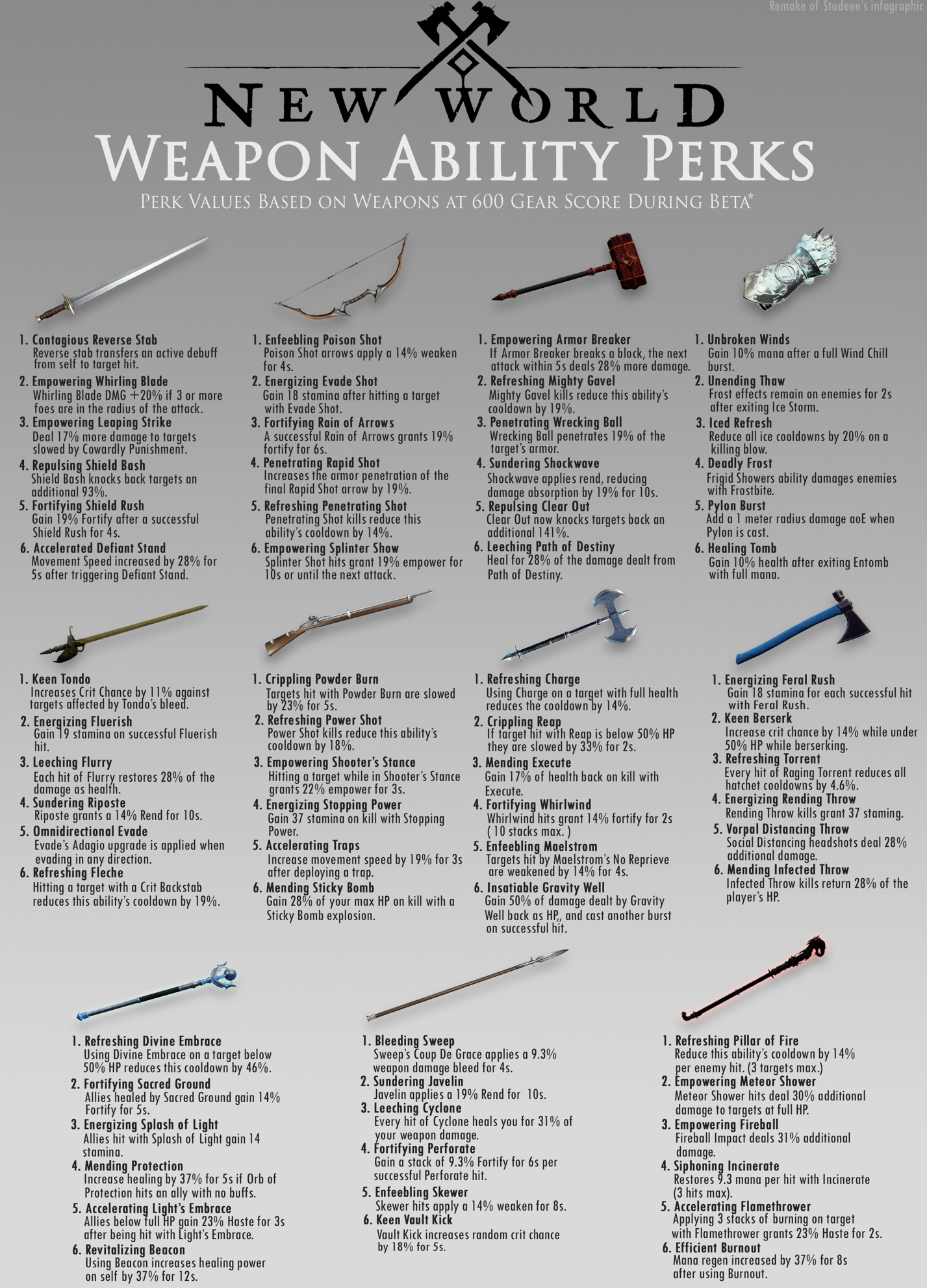
Panel of Recipes
All available crafting recipes are displayed in the left panel. If an item is displayed in white, it means you've met all of the requirements to make it. If you see items in red, it means you don't meet one or more of the crafting requirements (Resources, Skill Level, etc.). The crafting skill used is indicated by a small icon to the right of each item, and the numerical value represents the skill's minimum level required to craft the item.
Panel of Materials
The required materials for crafting the item are displayed in the materials panel in the middle. One type of Primary material and at least one or more types of Secondary materials are required for each crafted item. Crafters can also add a Special Resource to the item to predetermine the first Perk that will be added. Azoth can also be used to improve your chances of getting an Attribute, Perk, or Gem Slot.
Primary Materials
The main refined material used in a crafting recipe is called Primary Materials. Engineering's melee weapons, for example, will primarily be made of metals such as iron or starmetal. The tier of a primary material will always correspond to the tier of a crafted item. Primary materials of a lower tier cannot be used to make items of a higher tier.
Secondary Materials
Secondary Materials, unlike Primary Materials, can be of any tier within the same category when used in a crafting recipe. For example, one of the secondary materials in the Weaponsmithing recipe for the Starmetal Great Axe is Refined Wood. To meet the requirement, the crafter can use any of the following: Timber, Lumber, Wyrdwood Planks, Ironwood Planks, Petrified Wood, Glittering Ebony, Whisperwood, Quillbark, Ebonwood, Wildwood, Barbvine, or Animal Horn are all terms used to describe different types of wood. When using Secondary Materials, such as Ironwood Planks, using a higher Tier material raises the resulting item's Minimum Gearscore. Meanwhile, using a higher Rarity material, such as Barbvine, can increase both the Minimum and Maximum Gearscores. The key to creating the most powerful equipment and items is to combine better materials with higher crafting skill levels.
It's worth noting that some items, such as named or unique Weapons and Armor, have set material requirements that can't be changed. These items, on the other hand, usually come with much better or unique bonuses to compensate for the lack of flexibility.
It is important to remember that when crafting items, the crafting station will use resources from both your Inventory and any Storage Sheds you have within the Settlement, so it is not necessary to fill your inventory with crafting materials if you have a storage shed in the current settlement. It's worth noting that Storage Sheds aren't shared among Settlements. For example, items stored in Windsward cannot be used for crafting in First Light. You can, however, move items between storage sheds using the storage menu.
During the crafting process, Special Resources and Azoth Crafted items have a chance to gain one or more Perks. However, the Perks that are added are completely random, and the chances of getting any are slim until you reach higher crafting levels. Even then, there is no guarantee of success.
Special Resources, such as Chunk of Sparkmetal, can be used to predetermine one of the added Perks during the crafting process. It should be noted that this does not guarantee that the desired Perk will be added at all. Players can add Azoth during the crafting process to increase the chances of a crafted item gaining a Perk. Azoth can be added in 15-point increments up to a maximum of 75 points. In general, the more Azoth you spend, the more likely you are to receive Perks. Lower-tier items, on the other hand, will have a lower maximum threshold for Azoth infusion.
Item Yield and Gear Scoring
Engineering leveling increases the Minimum and Maximum Gear Scores of your crafted equipment by tiers. Improving the Maximum Gear Score opens the door to better items, whereas improving the Minimum Gear Score narrows the Gear Score range, making it easier to craft items at the higher end. In Engineering, leveling has no effect on item yield.
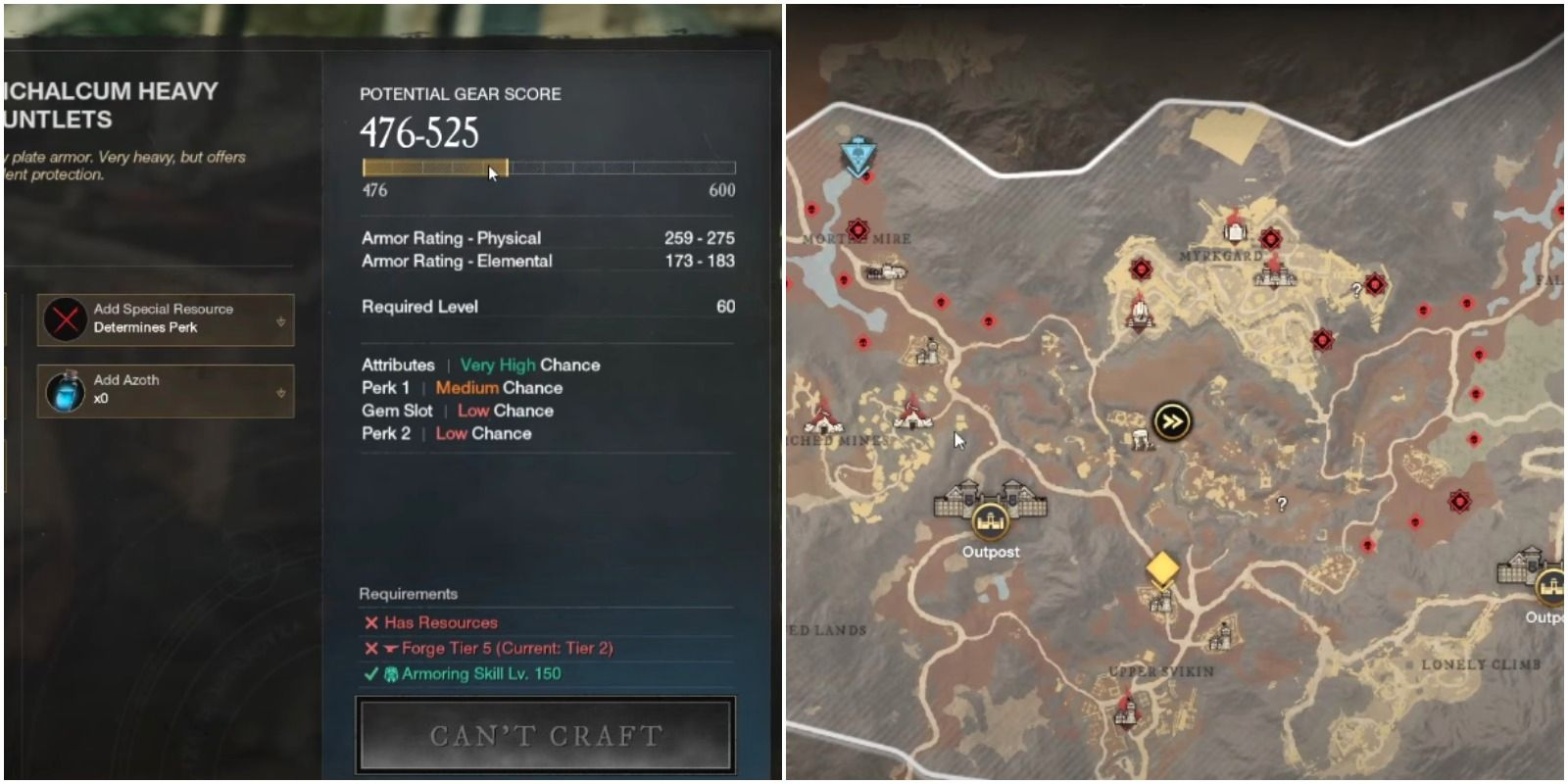
Weapons from Tier II
Tier II Crafted Weapons' Maximum Gear Score improves by 5 points every 5 levels, reaching 75 at level 70.
Starting at level 40, the Minimum Gear Score for Tier II Crafted Weapons improves by 5 every 10 levels, reaching a maximum of 20 at level 70.
Weapons from Tier III
Starting at level 50, the Maximum Gear Score for Tier III Crafted Weapons improves by 5 per 5 levels, up to 75 at level 120.
Starting at level 90, the Minimum Gear Score for Tier III Crafted Weapons improves by 5 every 10 levels, reaching a maximum of 20 at level 120.
Weapons from Tier IV
Starting at level 100, the Maximum Gear Score for Tier IV Crafted Weapons improves by 5 per 5 levels, up to 75 at level 170.
Starting at level 140, the Minimum Gear Score for Tier IV Crafted Weapons improves by 5 every 10 levels, reaching a maximum of 20 at level 170.
Weapons from Tier V
At levels 150, 165, 180, 190, and 200, the Maximum Gear Score for Tier V Crafted Weapons improves by 5, then 25, then 25.
Leveling will not increase the Minimum Gear Score for Tier V Crafted Weapons.
Tips for Leveling Engineering
Engineering leveling allows for the creation of more powerful, better-looking weapons with higher Gear Scores, as well as the possibility of imbuing them with Perks or a Gem Socket. As you progress in Engineering, you'll be able to unlock new recipes as well as more powerful versions of old ones.
When it comes to quickly leveling up a Crafting Skill, it's best to stick to lower tier items. This is due to the fact that the cost of crafting items rises exponentially as you progress through the tiers, with some higher-level recipes costing up to twice as much to make. Another advantage of crafting lower-tier items for leveling is the ease with which you can gather resources and the low market price if you choose to buy them instead.
The most efficient way to level in Engineering is to craft Proficiency Boosters, which only require Air Motes, Soul Motes, and Water. To gather the Motes using this method, you must first level up your Harvesting skill. Furthermore, the first tier of Proficiency Boosters is only available after you reach Engineering Level 20, so you'll have to resort to making Arrows. Fortunately, Arrows are one of the most material-efficient ways to level this skill, with the only bottleneck being the Feathers needed to make them. Iron Arrows can, in fact, quickly get you to max level if you collect enough materials. However, because Feathers are scarce, the Proficiency Booster path is recommended. Crafting Proficiency Boosters has the added benefit of temporarily increasing your gathering yield, which is extremely useful when gathering materials.
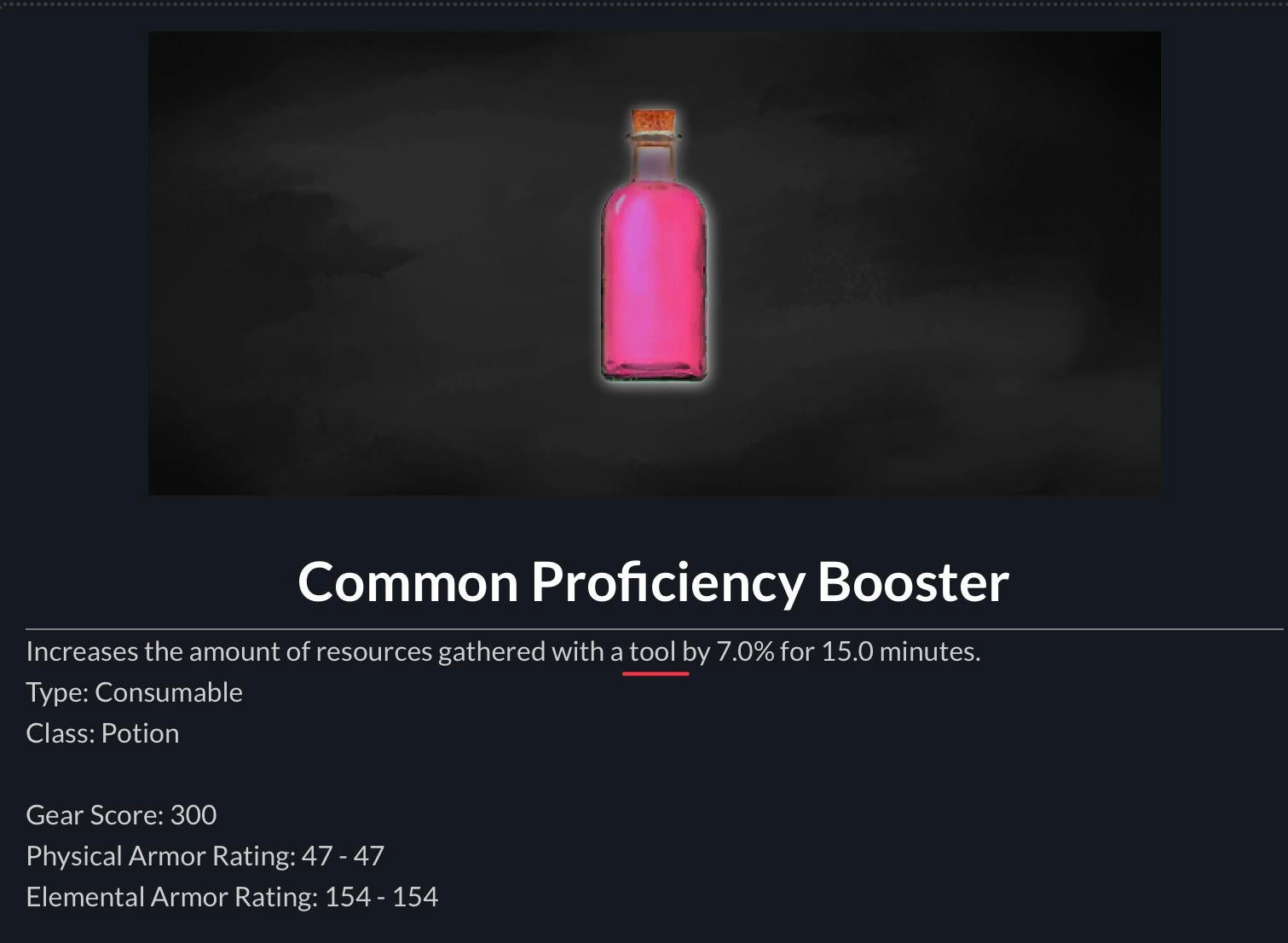
The table below shows how much experience is required to reach certain Engineering levels, as well as a rough estimate of how many Crafted Items are needed to get there. The table only shows tier milestone levels rather than all Engineering levels for the sake of simplicity.
In order to progress in Engineering, you'll need to use a Workshop with a high enough Tier (i.e., Tier IV Workshop to craft Tier IV items). In order to harvest Magical Plants for Motes, you'll need to get your Harvesting skill to Level 30. Alternatively, if you have Mining at Level 50, which should be relatively easy to achieve as you gather the materials needed to level Engineering, you can collect motes through it.
From 0 to 50, there are a variety of different levels to choose from.
To craft the Weak Proficiency Booster, first get your Engineering to level 20. Make 28 sets of Iron Arrows to accomplish this. Iron Arrows are sold in 50-piece sets for each craft.
To 20: Iron Arrow (total 28 sets)
56 x Timber: 224 x Green Wood 112 x Iron Ingot: 448 x Iron Ore
Feathers (ninety-four)
Iron Ore and Green Wood can be found in any of the starting areas, but Monarch's Bluffs is the best place to go for Soul Motes and Air Motes, thanks to the abundance of Soulsprout and Shockbulb plants. The Proficiency Boosters will be made from these Motes. Turkeys, which are plentiful in all areas, including Monarch's Bluffs, can provide feathers. Turkey Nests can be found near where Turkeys are roaming. Feathers may be found in these nests. Alternatively, look up Feather prices in your Trading Post and compare the cost to the time it takes to collect them.
Phase 2: Once you reach level 20, you can start crafting the Weak Proficiency Booster, which will take you all the way to level 50.
Proficiency Booster for People Who Have Low Proficiency (228 Total) 20–50 years old
228 x Mote 228 x Mote 228 x Mote 228 x Mote 228 x Mote 228 x Mote 228 x Mote
Motes from Soulspire and Shockspire formations in Monarch's Bluffs can also be mined if you have Mining at Level 50 or higher. These nodes can produce more motes than plants, but they are extremely difficult to find. The Soulwyrm and Thunder Beetles are two more options, both of which will produce a large number of motes but are extremely rare.
It's important to remember that after crafting these Proficiency Boosters, you should use them yourself because they increase your gathering yield and the higher tier versions can drastically reduce your gathering time. You can also sell them on the Trading Post if you think they'll be useful to others looking for materials.
50 - 200 levels
Iron Arrows (108 XP per craft) or Weak Proficiency Boosters (36 XP per craft) are tied for first place in the remaining leveling brackets. While Proficiency Boosters appear to provide less XP, they only require one of each material, resulting in a significant increase in efficiency. It's also possible to combine the two, especially if you're gathering in Monarch's Bluffs, where you'll find all of the materials needed for both routes.
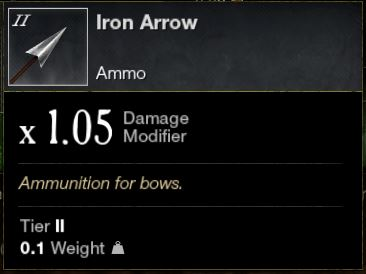
Higher tier Proficiency Boosters provide more XP per craft, but fusing the higher tier wisps and essences required results in a Material to XP ratio loss, especially since there is no other way to obtain them.
A Weak Proficiency Booster, for example, yields 36 XP by combining 1 x Air Mote, 1 x Soul Mote, and 1 x Water. A Common Oakflesh Balm costs only 90 XP and requires only 1 x Air Wisp (5 Motes), 1 x Soul Wisp (5 Motes), and 1 x Water, whereas those 5 Earth and Water Motes could be used to make 5 Weak Proficiency Boosters for 180 XP. This holds true for all higher tiers of Proficiency Boosters, so Tier II Balms are your best bet. Mote fusions are also restricted to Arcana levels 25, 75, and 125, introducing a new requirement not found in Tier II. If you've already reached these Arcana thresholds, consider crafting a few of the higher tier boosters for yourself, as they increase gathering yield and make it easier to collect leveling materials.
From Level 50 to Level 200, the Arrow Route has a total of 17,318 sets.
The Arrow of the Iron God
34,636 x Timber: 138,544 x Green Wood 51,954 x Feathers 69,272 x Iron Ingot: 277,088 x Iron Ore
With 108 XP per craft, you should be able to reach Level 200 with 1,870,344 XP.
Route to Increase Proficiency (51,953 boosters total from 50 to 200)
Common Proficiency Booster is a tool that helps you improve your proficiency in a variety
Air Mote 51,953 x Soul Mote 51,953 x Water Mote 51,953 x Air Mote 51,953 x Water Mote 51,953 x Air Mote 51,953 x Water
This equates to 1,870,308 XP, or Level 200, at 36 XP per craft.
Gunpowder is another excellent resource-saving option. You can go from 50 to 200 without needing any engineering knowledge. Players who use Muskets will want this item, and it will probably sell well at the Trading Post. Sets of 5 gunpowder are made.
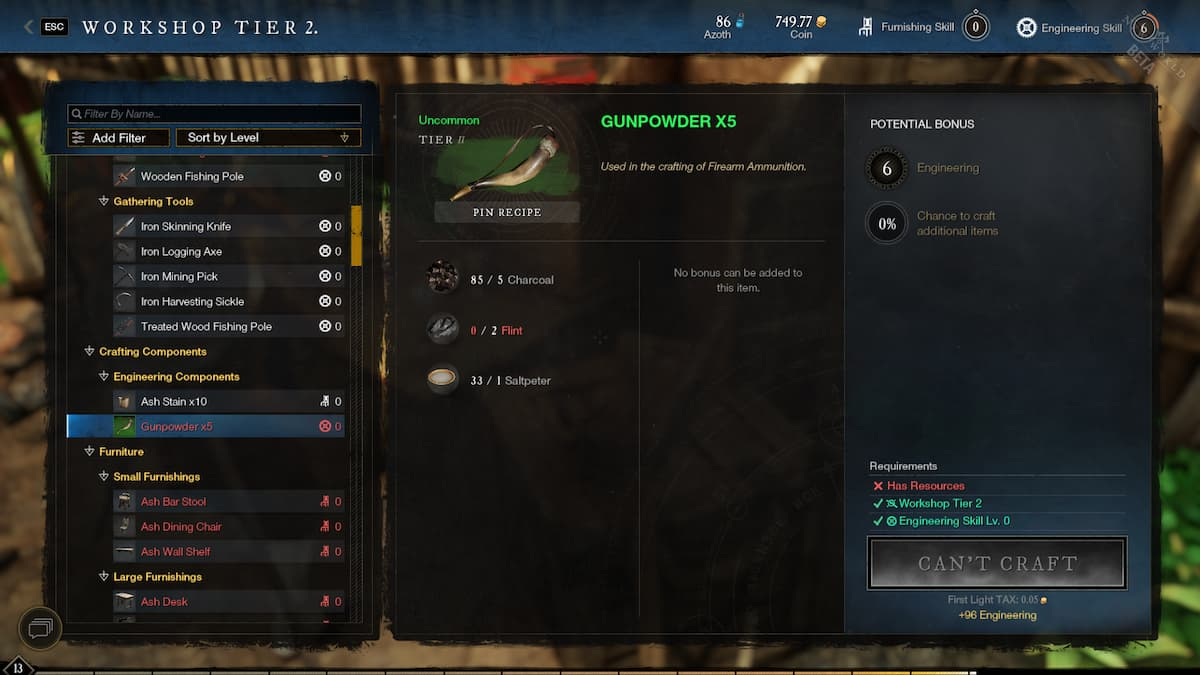
Powdered explosives (19,483 Sets Total) 50-200 people
194,830 x Green Wood, 38,966 x Flint, and 19,483 x Saltpeter make up 97,415 x Charcoal.
This equates to 1,870,368 XP, or Level 200, at 96 XP per craft.
Flint can be found almost anywhere, but it's most common near sand and water. Saltpeter is most commonly found in caves and underground spaces. Windsward's Inkwell Cave and Scratchrock Burrow, as well as Monarch's Bluffs' Offal Grotto, Bayhowl Burrow, and Hurtfang Hole, are all great places to visit.
Engineering To Make Money
Gathering Tools are extremely profitable to craft and sell as an Engineer. Gathering Tools are low-cost and popular. To increase your chances of gaining Perks, use Azoth when crafting tools. Because Gathering Tools have a smaller pool of Perks to choose from, it's easier to get a good set of Perks, even if the chance is random. If you want to make even better tools, eat food that improves crafting before you start to increase the Gear Score of the items you make, which will increase their sell value.
Other ways to make money include crafting and selling Iron Cartridges and Arrows, both of which provide a significant amount of XP for leveling your Engineering skill.
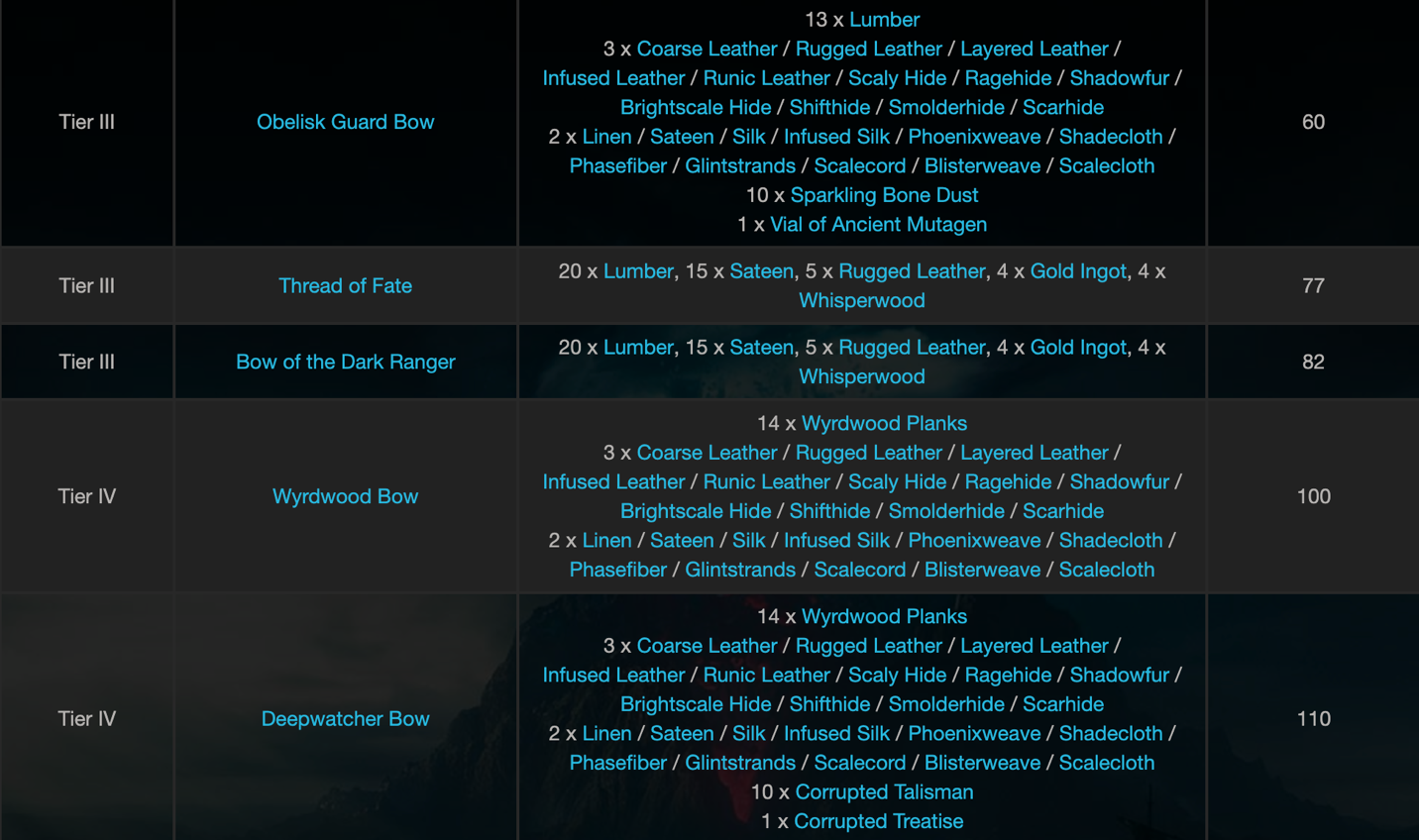
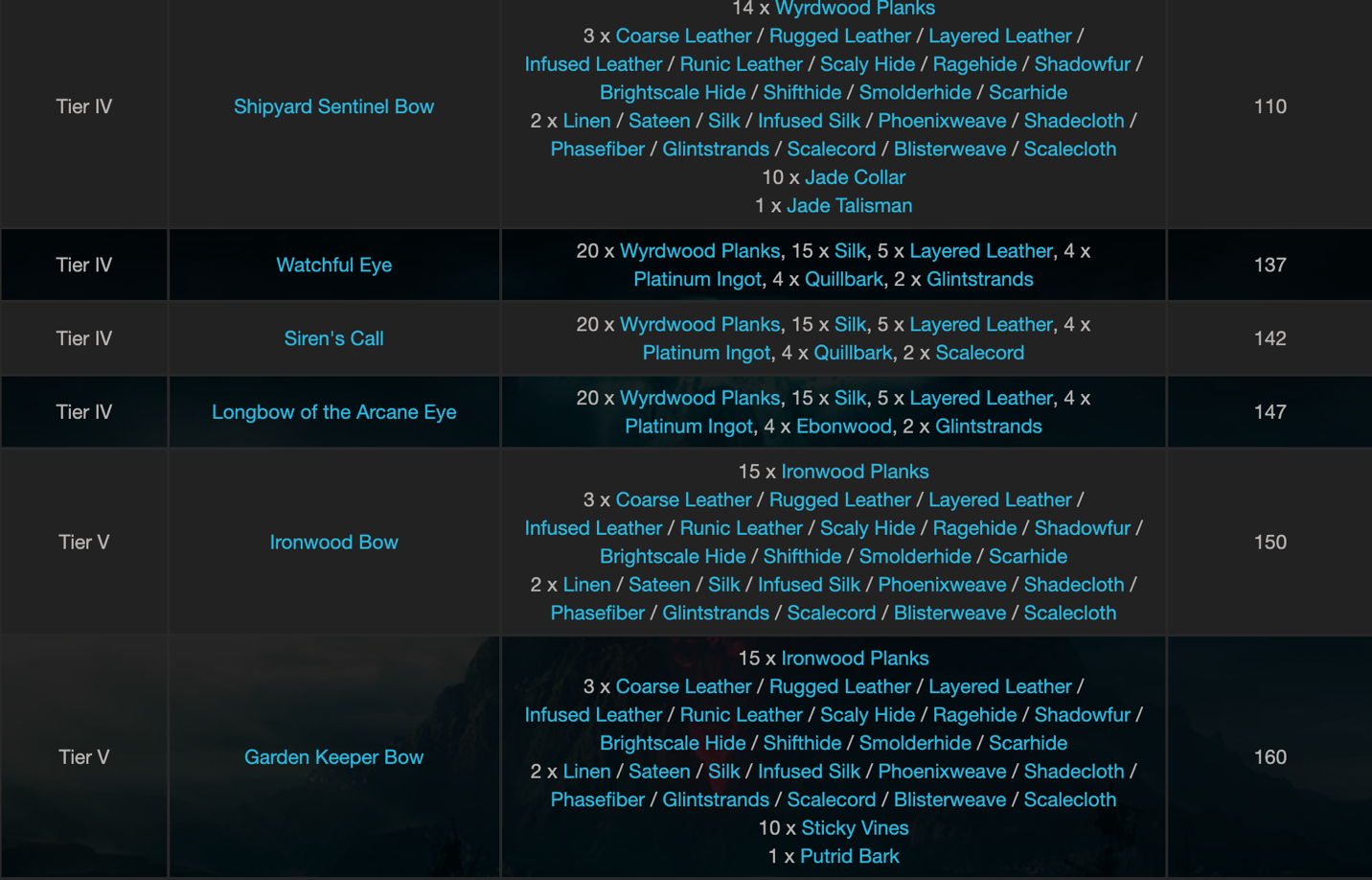
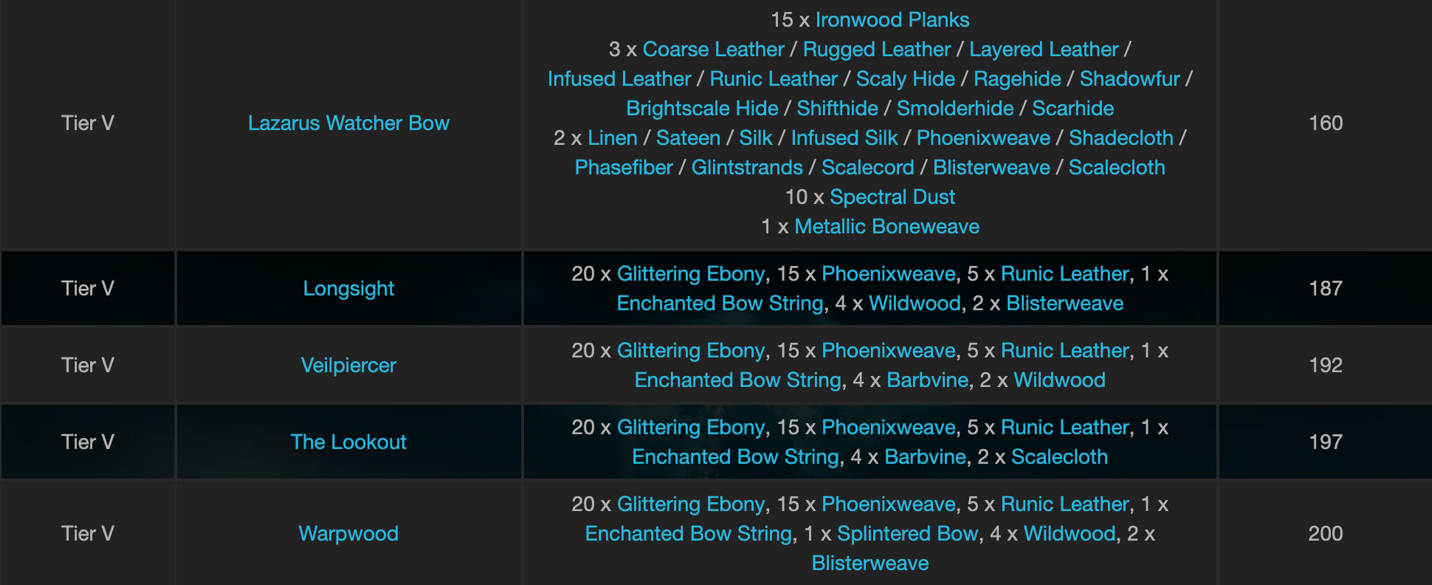
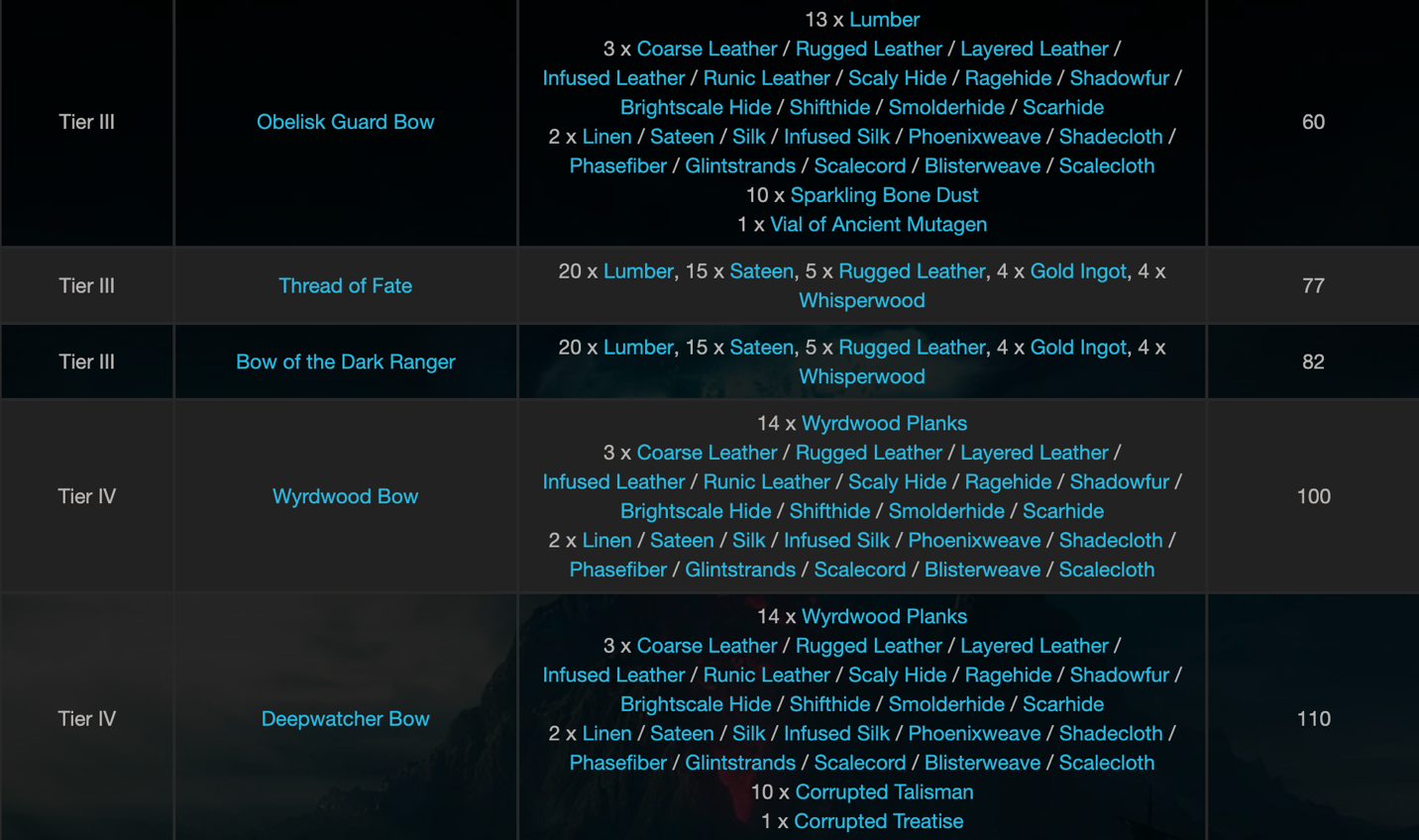
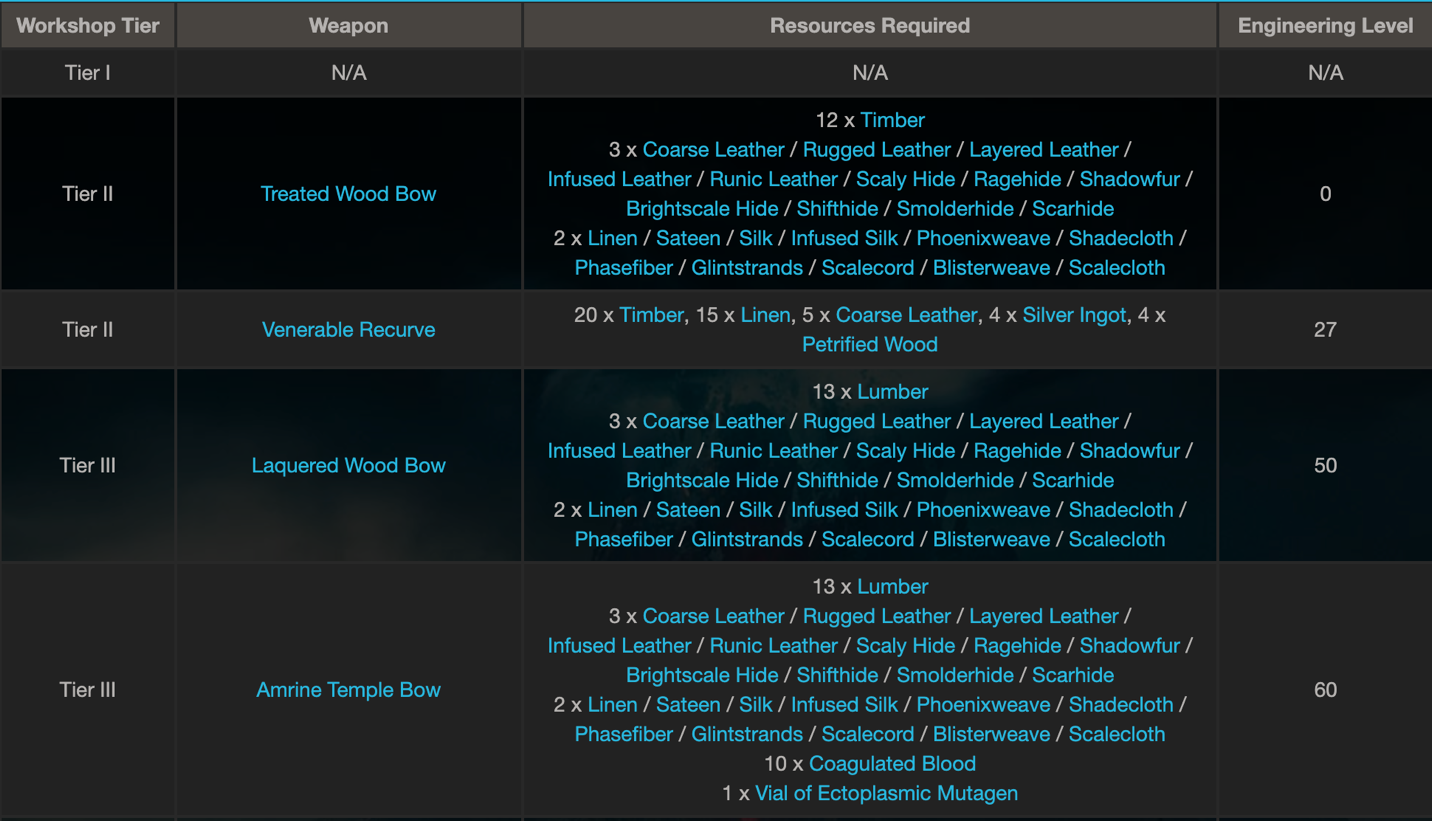
Credit: New World Wiki


